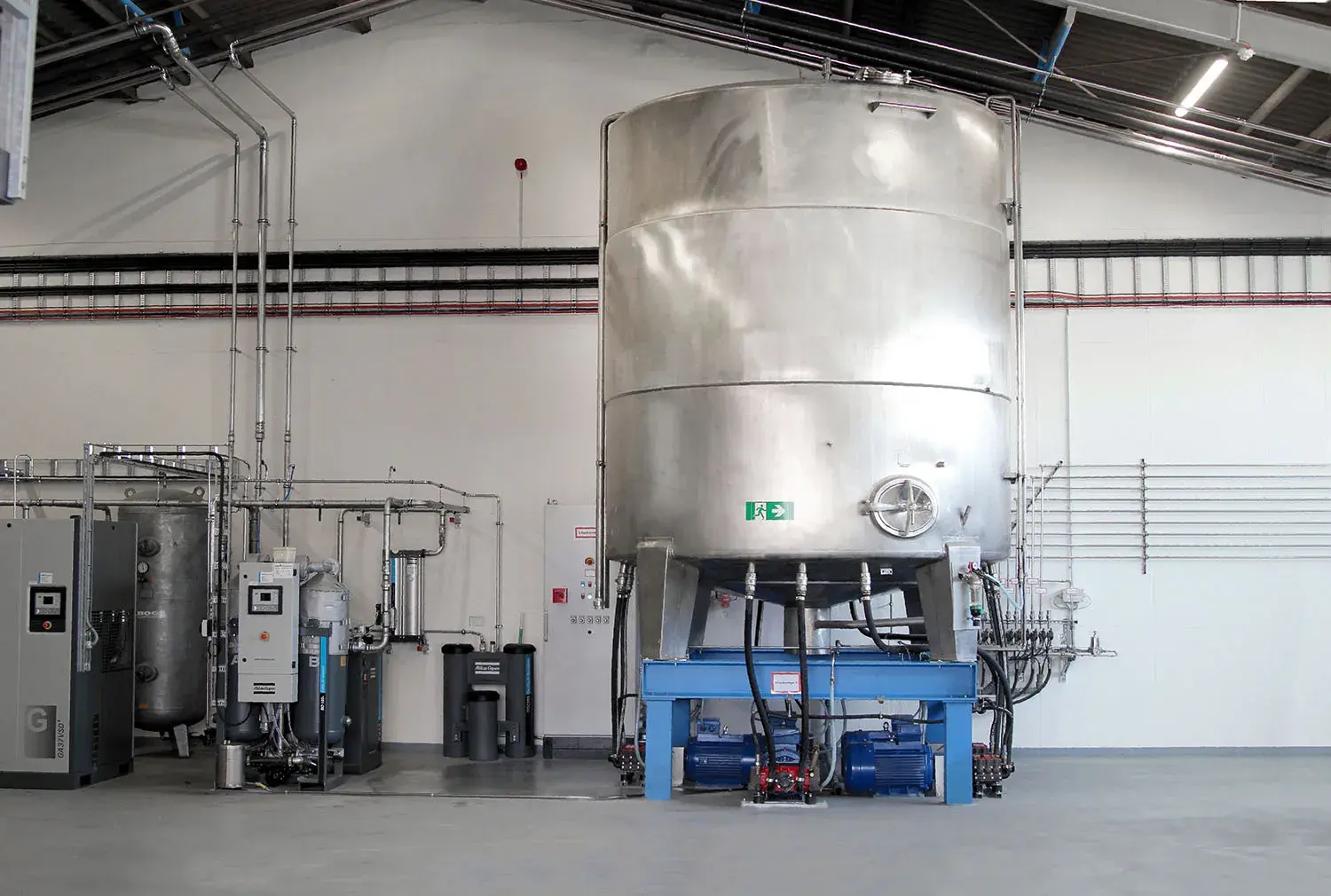Functionality of water mist extinguishing systems
Water mist extinguishing systems have special nozzles and sprinklers that atomize the water so finely that a water mist is created. This increases the water surface area by a factor of 1,600 compared to classic sprinkler systems and achieves area-wide extinguishing of fires. The resulting cooling and smothering effect ensures particularly effective firefighting with reduced use of extinguishing water. Water mist extinguishing systems, for example, fight the fire on two sides of the fire triangle by cooling the fire and the surrounding area, absorbing radiant heat, and removing oxygen from the source of the fire.

High pressure and low pressure water mist extinguishing systems
Two systems - one goal! Basically, a distinction is made between high-pressure water mist and low-pressure water mist systems. In high-pressure water mist systems, the extinguishing water is increased to an application pressure of 60 to 180 bar by pump systems. This results in a fine mist with a high extinguishing effect at low water volumes. In contrast, low-pressure water mist systems operate at a maximum operating pressure of 16 bar and generate a water mist by atomizing water using special nozzles.
Reduction of firefighting water damage and downtime
Both systems offer the advantage that the water supply can be provided by transportable water tanks made of plastic or stainless steel. This allows easy and quick retrofitting as well as assembly on site. In addition, the cooling and stiffening effect allows reduced use of extinguishing water. Accordingly, the space requirement is reduced by up to 80 percent compared to classic sprinkler systems. The fine water mist and the reduced use of extinguishing water also reduce damage in comparison with conventional sprinkler technology. Operational downtimes and interruptions can be reduced to a minimum. At the same time, there are no pre-warning and evacuation times as with gas extinguishing systems. The application is sustainable due to low water consumption and harmless to the environment, as no further extinguishing agents are used. Finally, a water mist extinguishing system is quickly ready for use again after an operation.

Wide range of applications for water mist extinguishing systems
Water mist extinguishing systems are primarily used in places where fires can spread very quickly, such as theaters, power plants or waste disposal companies. They are also frequently used in hospitals, offices, schools and in guest and accommodation facilities. Other areas of application include sales and assembly areas, as well as production machines, gas turbines, engine test stands and transformers in industry.
All areas of application at a glance
- Hospitals
- Offices
- schools, museums
- Sports facilities
- Restaurants/accommodation facilities
- Sales/meeting places
- Parking garages
- Laboratories
- Clean rooms
- Warehouses, production machines
- gas turbines, engine test benches, transformers
Planning of a water mist extinguishing system
The plant design is planned on the basis of an individual protection target and one or more previously defined and self-contained protected areas. These are equipped with a pipe network and the associated nozzle technology. In addition, the installation of a machine and object protection system is possible as a supplement or stand-alone solution. The attached graphic provides an initial overview of the planning and components of a water mist extinguishing system.
- Water tank
- High pressure pumps
- Area distribution
- Piping network
- Fogging nozzles
- Control system
- Interface distributor
- Fire alarm control panel
- Fire alarm system

CWS Fire Safety offers you system planning and project planning by highly qualified and trained employees. They plan an extinguishing system for the best possible safety based on the optimum system for them, which is based on high-quality materials (such as stainless steel) as standard. Subsequently, CWS also takes care of the installation, acceptance and maintenance of the water mist extinguishing system. This means you get everything from a single source - throughout Germany.
